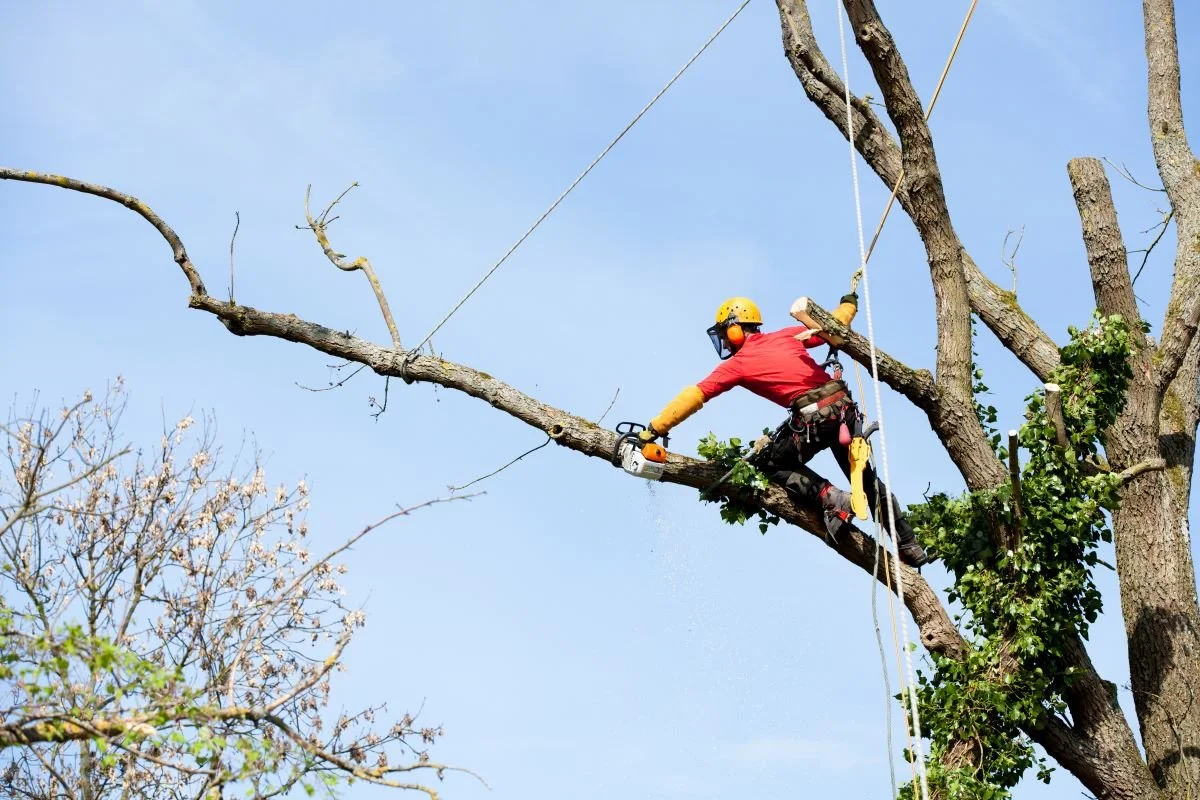
Industry News

Three Industry Benchmarks all Landscape Companies Should Track
Author, Greg Garcia, Account Executive, Rancho Mesa Insurance Services, Inc.
There are three major benchmarks that all landscape companies should consider when looking at how well they manage risk: average claim cost, claim indemnity rate, and claim frequency rate. Knowing the importance of this, we designed a key performance indicator (KPI) dashboard that highlights these industry benchmarks, as well as benchmarks them against other landscape companies in their geographic area.
Author, Greg Garcia, Account Executive, Rancho Mesa Insurance Services, Inc.
There are three major benchmarks that all landscape companies should consider when looking at how well they manage risk. The three benchmarks are your:
Average Claim Cost
Claim Indemnity Rate
Claim Frequency Rate
Knowing the importance of this, we designed a key performance indicator (KPI) dashboard that highlights these industry benchmarks, as well as compares them against other landscape companies in their geographic area.
We have pulled data from all landscape companies using the 0042 class code and have come up with some industry averages. For the sake of this example, we will use California landscape contractors only.
In California, the average claim cost for landscape contractors is $50,300 per 1 million dollars of landscape payroll. In other words, on average for every 1 million dollars a landscape company has in the 0042 class code they should incur about $50,300 in claim cost. That number would rise to $100,600 in claim cost if a landscape company had 2 million dollars in 0042 class code.
The next major category to consider would be indemnity rate. Indemnity rate, or claims that result in lost time and temporary disability, the industry average is 0.7 claims per 1 million dollars of 0042 payrolls.
Finally, the last category we consider is frequency rate. In California for every 1 million dollars allocated to the 0042 class code on average that company will have 1.5 claims.
Knowing the data will not only give your team a good indication of how safe your company is, but these categories also play a significant role in determining work comp premiums. There are several underwriting metrics a worker compensation underwriter takes into consideration when looking at a prospective business. The Experience MOD, loss history, and of course safety protocols and procedures to name a few.
The other major metric that underwriters are looking at are these three benchmarks: , average claim cost, indemnity rate, and frequency rate. Simply put, the better a landscape company scores in these critical metrics, the better chance that an underwriter will add schedule credits to lower the worker’s compensation premium.
Now is a great time to see how well your landscape company stacks up against your peers, and consider any internal options to improve your metrics in any of these three major categories.
Using Rancho Mesa’s KPI Dashboard to Improve Your Workers’ Compensation Program
Author, Drew Garcia, Vice President, Landscape Group, Rancho Mesa Insurance Services, Inc.
Landscape business leaders can now provide their management team with resources to better support their workers’ compensation program. Rancho Mesa offers its landscape, lawn care and tree care customers an industry specific Workers’ Compensation Key Performance Indicator (KPI) that can be used to help benchmark a company’s experience modification rate (i.e., Ex-Mod, Experience Mod), and the underlying performance trends that can help stakeholders stay informed.
Author, Drew Garcia, Vice President, Landscape Group, Rancho Mesa Insurance Services, Inc.
Landscape business leaders can now provide their management team with resources to better support their workers’ compensation program. Rancho Mesa offers its landscape, lawn care and tree care customers an industry specific Workers’ Compensation Key Performance Indicator (KPI) that can be used to help benchmark a company’s experience modification rate (i.e., Ex-Mod, Experience Mod), and the underlying performance trends that can help stakeholders stay informed.
The KPI is an easy to read one-page document made up of dials and dashboards so that the business leaders can easily absorb the most critical pieces of information.
Three Use cases
Landscape businesses can use the KPI to help set annual leading indicator goals. These goals, like the completion of a certain number of toolbox talks, safety observations, and online trainings can all be tracked in Rancho Mesa’s SafetyOne™ Platform. By using the lagging information provided in the KPI, any business can then set goals to address corrections that the KPI discloses.
The Ex-Mod can be used as a pre-qualification tool for bidding new work or maintaining certain contracts. With the KPI dashboard, landscape businesses will always know their current, 10 previous, and estimated future Ex-Mods.
Underlying information such as frequency and severity rates can easily be understood through the StatTrack™ portion of the KPI dashboard. These rates are viewed as trends and allows the business to make timely corrections.
Empower your leadership team to better understand your workers’ compensation program by providing them with the tools they need to effectively make a difference.
Learn more about the KPI Dashboard on Rancho Mesa’s Mod Doctor webpage.
Understanding the Importance of Your Workers’ Compensation Unit Stat Filing Date
Author, Greg Garcia, Account Executive, Rancho Mesa Insurance Services, Inc.
Imagine you are a landscaping company owner and your workers’ compensation policy just renewed January 1st. You are probably thinking, now what? Well, the next date that should be on your radar is June 30th, your unit stat date.
Author, Greg Garcia, Account Executive, Rancho Mesa Insurance Services, Inc.
Imagine you are a landscaping company owner and your workers’ compensation policy just renewed January 1st. You are probably thinking, now what? Well, the next date that should be on your radar is June 30th, your unit stat date. Each unit stat date varies and with the actual filing taking place approximately 180 days from when the workers’ compensation policy was placed. The unit stat date is when all workers’ compensation claim activity is frozen, along with audited payroll information, and sent to the rating bureau so the experience modification (XMOD) can be calculated.
As a reminder, your XMOD is determined by comparing your loss experience and historical payroll to others with similar class codes. The XMOD is derived from three years of audited payroll and losses suffered over those years.
If a particular claim is closed after your unit stat date, that claim will impact your next XMOD at the total incurred value before the unit stat date. Therefore, if you have a claim that can either be closed or reserves reduced, it is critical that this is done ahead of the unit stat date. Staying up to date with your claims adjuster and insurance professional ahead of the filing can quite literally save you points on your XMOD, which in turn can help to reduce your worker’s compensation annual premium.
Using one of the metrics on our proprietary KPI Dashboard, our clients are able to track the number of days until their unit stat date. Combining this KPI tool with our dedicated workers’ compensation claim advocate services at prescheduled claims reviews throughout the policy year helps to close the claims or mitigate claim costs in advance of the filing. This strategy can dramatically lower overall insurance costs.
If you have any questions about the unit stat or would like me to put together a custom KPI dashboard for your team, you can contact me at ggarcia@ranchomesa.com.
Take Your Safety Program to the Next Level through Leading Indicators
Author, Drew Garcia, Vice President of the Landscape Group, Rancho Mesa Insurance Services, Inc.
When it comes to measuring safety, most green industry (i.e., lawn, landscape, and tree care) businesses rely on OSHA rates, the experience modification, and, if you’re a Rancho Mesa customer, your Safety KPI Dashboard. This data is important; however, it only captures lagging information. Take your safety program to the next level by measuring predictive, preventive, and proactive - leading indicators.
Author, Drew Garcia, Vice President of the Landscape Group, Rancho Mesa Insurance Services, Inc.
When it comes to measuring safety, most green industry (i.e., lawn, landscape, and tree care) businesses rely on OSHA rates, the experience modification, and, if you’re a Rancho Mesa customer, your Safety KPI Dashboard. This data is important; however, it only captures lagging information. Take your safety program to the next level by measuring predictive, preventive, and proactive - leading indicators.
The SafetyOne™ mobile application provides your green industry business with the ability to capture your leading indicator goals at the yard or on the jobsite.
OSHA published a document on leading indicators along with resources on hazards and solutions for the landscape and horticultural services industry. In the article, OSHA suggest using SMART principles when setting up your program. SMART stands for specific, measurable, accountable, reasonable, and timely.
Examples of Leading Indicators
Attendance at safety meetings - Are your employees attending regular toolbox talks, formal safety meetings, and getting proper safety onboarding? How do you know? Keeping a current record of safety activities allows management to know when safety is a priority or when it’s been neglected. Using data collected in the SafetyOne mobile app, management knows in real-time when a crew did or did not complete a scheduled toolbox talk or safety meeting by the end of the shift. This is a leading indicator that safety is either a priority or it is not and it is time to address the issue before there is an accident.
Industry Known Hazards
Heat Stress – Training, Checklist
Vehicle Accidents – Training, Driving Requirements
Slips, Trips, Falls – Job Hazard Analysis
Lifting – Training, Mobility and Stretch
Cuts and hand injuries - Training
Chemical – SDS, Training
PPE – Training, Checklist
Electrical – Dig alert, Checklist
Review your companies own loss history and extend your indicators to reach your company’s assets and liabilities
Equipment theft
Third-party slip and falls
Vehicle accidents at fault/not at fault
Third party property damage
Equipment damage
By using the SMART principles when developing your leading indicators, you can clearly define your goals. Making the indicators measurable allows your team to take the information and make calculated and informed decisions.
To learn more about the leading indicators or the SafetyOne™ mobile app, contact me at (619) 937-0200 or drewgarcia@ranchomesa.com.
Maximize Your KPI Dashboard Insight
Author, Drew Garcia, Vice President of the Landscape Group, Rancho Mesa Insurance Services, Inc.
Three years ago, Rancho Mesa launched our proprietary safety KPI dashboard, consolidating experience mod and industry benchmarking reports to one working document. As a Rancho Mesa customer, you can now maximize the benefit of your safety KPI dashboard by completing our baseline training which will challenge the stakeholders in your organization to understand the key concepts this document delivers.
Author, Drew Garcia, Vice President of the Landscape Group, Rancho Mesa Insurance Services, Inc.
Three years ago, Rancho Mesa launched our proprietary safety KPI dashboard, consolidating experience mod and industry benchmarking reports to one working document. As a Rancho Mesa customer, you can now maximize the benefit of your safety KPI dashboard by completing our baseline training which will challenge the stakeholders in your organization to understand the key concepts this document delivers.
With the training and subsequent quiz behind you, you will be poised with the ability to roadmap your company’s commitment to safety and answer some common questions like:
Do all work-related injuries impact my XMOD the same?
What is an indemnity claim?
What is my estimated renewal XMOD?
How do we compare to our industry?
This training can also be used for employees who transition or are hired to help oversee your workers’ compensation program.
Quickly bring these employees up to speed by developing their skills through our online dashboard training.
Maximize your relationship with Rancho Mesa and train your team to better handle your workers’ compenasation program.
This course will be available in the SafetyOne™ platform in May 2023.
For more information, contact Drew Garcia at (619) 937-0200 or drewgracia@ranchomesa.com.
All Licensed California Tree Care Companies Now Required to Carry Workers’ Comp. Insurance
Author, Rory Anderson, Account Executive, Rancho Mesa Insurance Services, Inc.
Within the last few weeks, all licensed tree care companies received a notice in the mail from the California State License Board (CSLB) stating that effective January 1, 2023, the CSLB is requiring that all companies with a D-49 Tree Service Contractor license must have workers’ compensation insurance, regardless of whether they have employees.
Author, Rory Anderson, Account Executive, Rancho Mesa Insurance Services, Inc.
Within the last few weeks, all licensed tree care companies received a notice in the mail from the California State License Board (CSLB) stating that effective January 1, 2023, the CSLB is requiring that all companies with a D-49 Tree Service Contractor License must have workers’ compensation insurance, regardless of whether they have employees.
Currently, licensed tree care companies without employees are exempt from having workers’ compensation insurance. This new requirement comes after Governor Gavin Newsom signed Senate Bill 216 into law on September 30, 2022 which requires all contractors (not just tree service contractors), with or without employees, to have workers’ compensation insurance by January 1, 2026.
According to an article by Red Bluff Daily News, “The California State License Board research confirms that many of the approximate 50 to 60 percent of licensed contractors who currently claim an exemption to workers’ compensation insurance do use employees.”
This not only puts the non-insured tree workers and the public at risk, but it also poses an issue of unfair advantage to the companies who do not carry workers’ compensation. This creates a disadvantage for tree service contractors who play by the rules, as they are subject to higher business costs.
This new requirement will hold every tree service contractor accountable to the same standards by leveling the playing field, and it will protect the tree workers and our public.
How does this impact you, as a licensed tree service contractor?
If you currently have workers’ compensation insurance in place, confirm with your broker that they have properly provided a certificate of insurance to the CSLB to show proof of insurance. You may also check your license status with the Department of Consumer Affairs to confirm it is up to date.
If you are a tree care company that does not currently have employees, contact me to explore workers’ compensation insurance options for your business, effective January 1, 2023.
If you would like to discuss further, please reach out to me at randerson@ranchomesa.com or call me at (619) 486-6437.
Rise in Pure Premium Rates Impacts Tree Care Industry
Author, Rory Anderson, Account Executive, Rancho Mesa Insurance Services, Inc.
Pure premium rates are determined by the Workers’ Compensation Insurance Rating Bureau (WCIRB). The rates reflect the amount of losses that an insurance carrier can expect to pay out in claims for that particular class of business. Every year, the WCIRB submits pure premium rates to the California Department of Insurance for approval. These pure premium rates are comprised of loss and payroll data submitted to the WCIRB by all the insurance companies in California.
Author, Rory Anderson, Account Executive, Rancho Mesa Insurance Services, Inc.
Pure premium rates are determined by the Workers’ Compensation Insurance Rating Bureau (WCIRB). The rates reflect the amount of losses that an insurance carrier can expect to pay out in claims for a particular class of business. Every year, the WCIRB submits pure premium rates to the California Department of Insurance for approval. These pure premium rates are comprised of loss and payroll data submitted to the WCIRB by all the insurance companies in California.
Each workers’ compensation insurance company has its own base rate for the 0106 Tree Pruning class code, for example. In order to establish the base rate, the insurance carrier takes the approved pure premium rate from the WCIRB and applies their factor that includes general overhead expenses, sales and marketing expenses, taxes and fees, and profit. So, if the pure premium rates are increasing, the insurance companies’ base rates are also increasing.
The 2022 pure premium rate in the tree care industry (class code 0106) has increased to $11.36 per $100 of payroll, which is roughly a 9% increase from last years $10.39. This means that the overall workers’ compensation claim activity in the tree care industry is up about 9%, and the WCIRB is recommending that the workers’ compensation insurance carriers increase their base rates to price for that increase in claim activity.
What can you do to prepare for this change and limit the impact to your tree care business?
Lower your claim frequency and severity with a consistent, robust safety and training program, focusing in on root causes of the claims.
Control your experience MOD with quarterly claim reviews and an aggressive return to work program.
Maintain strong carrier partnerships and continuity with carriers that have excellent in-house claims handling.
Benchmark your company with the rest of the tree care industry to see how you compare to your peers. As part of our proprietary TreeOne™ program, we have created a Key Performance Indicator (KPI) dashboard for the tree care industry that puts this information at your fingertips. To see how you compare with your peers, request the KPI Dashboard for your company.
For more information on rising pure premium rates, contact me at (619) 486-6437 or email me at randerson@ranchomesa.com.
Understanding the Impact of MEP Contractors’ Dual Wage & Total Temporary Disability
Author, Sam Clayton, Vice President, Construction Group, Rancho Mesa Insurance Services, Inc.
What is a dual wage threshold? According to the Workers’ Compensation Insurance Rating Bureau (WCIRB), in California there are sixteen (16) construction operations that are divided into two separate classifications based on the hourly wage of the employee. There are different advisory pure premium rates for the low wage employee and the high wage employee.
Author, Sam Clayton, Vice President, Construction Group, Rancho Mesa Insurance Services, Inc.
What is a dual wage threshold? According to the Workers’ Compensation Insurance Rating Bureau (WCIRB), in California there are sixteen (16) construction operations that are divided into two separate classifications based on the hourly wage of the employee. There are different advisory pure premium rates for the low wage employee and the high wage employee. For mechanical, electrical and plumbing (MEP) contractors, the class codes used are all included in the recently approved increase which will go into effect September 1, 2022. The table below outlines the changes for the MEP class codes by year.
| Classifications | 9/1/2021 - Current | 9/1/2022 - Proposed |
| 5140/5190 | $32 | $34 |
| 5183/5187 | $28 | $31 |
| 5538/5542 | $27 | $29 |
© 2021 Workers' Compensation Insurance Rating Bureau of California. All Rights Reserved.
Why does this matter to MEP contractors? The higher wage employee’s workers’ compensation rate is significantly less (on average 46% less) than the lower wage employee. Therefore, if a company has any employees that are currently just barley in the high wage classification, this would drop those employees into the low wage classification and the employer would pay the higher workers’ compensation rate on those individuals. Depending on how many employees an employer has in this situation, it may be advantageous for the employer to calculate if it makes more sense to give those impacted employees a raise to push them back up into the high wage classification or keep them in the new low wage classification. It should be noted and understood that this change will not impact the employer until their next renewal after September 1, 2022. So while most employers will have time to evaluate the impact, it is crucial to begin the evaluation sooner rather than later.
As with any form of wage inflation, an increase in wages, to keep an employee in the higher wage category will increase the claim costs of a total temporary disability claim if they are injured on the job. While increases in wages are necessary, they will also impact the total cost of the claim, which then can increase the company’s experience modification rating (XMOD).
To mitigate this increase and reduce the likelihood of a lost time claim, employers can take several actions:
Review and update their existing safety programs.
Revisit their hiring practices.
Develop a sustainable return-to-work program.
What should employers do next?
Work with your trusted insurance advisor and run a needs/benefit analysis on increasing employee wages.
Understand your numbers.
What is your primary threshold and why does it matter?
What is my claim cost per point of XMOD?
How does my frequency of claims compare to the MEP industry?
How does my lost time claim average compare to other MEP contractors?
If you would like assistance understanding how these and other data points impact your company, request a proprietary Key Performance Indicator (KPI) dashboard that puts this information at your fingertips.
You still have time to be proactive, do not let these critical changes catch you by surprise!
Timely Reporting of Workers’ Compensation Claims Lower Overall Costs
Author, Jack Marrs, Associate Account Executive, Rancho Mesa Insurance Services, Inc.
Leading into 2022, it is important for employers to examine their workplace injury reporting practices. Specifically, employers should report all injuries including medical-only workplace injuries to their workers’ compensation insurance company. Best practices dictate all claims should be reported within the first 24 hours in order to improve treatment to the injured worker and reduce the overall cost of the claim to the employer.
Author, Jack Marrs, Associate Account Executive, Rancho Mesa Insurance Services, Inc.
Leading into 2022, it is important for employers to examine their workplace injury reporting practices. Specifically, employers should report all injuries including medical-only workplace injuries to their workers’ compensation insurance company. Best practices dictate all claims should be reported within the first 24 hours in order to improve treatment to the injured worker and reduce the overall cost of the claim to the employer.
A recent conversation with an underwriting manager highlighted the fact that some employers are choosing to pay for occupational clinic visits rather than filing a claim, assuming that small medical-only claims will negatively impact the Experience Modification Factor (X-mod) and ensuing workers’ compensation premiums. However, in actuality claims of $250 or less do not impact the X-mod. Not only are employers legally required to report workplace injuries, but those small claims can easily turn into something bigger, if not reported in a timely manner. Further, the reporting of all incidences can assist a company in identifying trends and root causes thereby allowing for proactive measure to be taken. Rancho Mesa’s proprietary Key Performance Indicator (KPI) dashboard helps track these trends and compare a company’s performance to that of their industry. Request a KPI dashboard for your company.
Why then does reporting lag result in higher claim costs? An insurance carrier’s ability to investigate a claim, determine compensability, and identify fraud may be hindered as details of the incident fade, witnesses may no longer be available or key evidence may not be preserved. According to Liberty Mutual, a 29-day delay in reporting an injury can lead to a 33% increase in lost time, 52% higher average claim cost, and 152% increase in litigation rates. This makes sense when one considers that a delay in seeking treatment could cause an employee’s condition to worsen, extending recovery time and temporary disability payments.
Lastly, an employer paying a medical bill will pay much more than a workers’ compensation carrier would pay for that same bill as insurance companies negotiate a reduced fee schedule for occupational injuries. Bottom line, failure to report workplace incidents in a timely manner can put any organization and its employees at risk for no benefit. Contact Rancho Mesa to learn more about our Risk Management Center and how our free trainings and webinars can improve your reporting practices.
Experience Mod KPI Provides Trend Analysis, Opportunity Assessment, and Vital Management Tools
Author, Drew Garcia, Vice President, Landscape Group, Rancho Mesa Insurance Services, Inc.
In January 2021, we launched the Safety Key Performance Indicator (KPI) Dashboard to provide a tool for our customers to use as a bridge between their experience mod and safety performance.
Author, Drew Garcia, Vice President, Landscape Group, Rancho Mesa Insurance Services, Inc.
In January 2021, we launched the Safety Key Performance Indicator (KPI) Dashboard to provide a tool for our customers to use as a bridge between their experience mod and safety performance.
Our primary goals were to:
Eliminate surprises
Simplify concepts
Track performance
Highlight the positive and negative trends
Benchmark safety performance against industry competitors
An experience mod above 100 can limit a landscape company’s ability to be awarded jobs or maintain contracts, increase insurance premiums, and have other significant financial implications.
Our dashboard is a tool companies can use to strategically manage the underlying components that directly impact the experience mod and help project future experience mod deviations. Rancho Mesa can help interpret the results and provide insights to help improve your performance.
Not a Rancho Mesa client but interested in seeing what your dashboard looks like? Complete our new KPI Dashboard quick form, to see how your company measures up.
Changes on Horizon Likely to Affect Workers’ Compensation
Author, Sam Clayton, Vice President, Construction Group, Rancho Mesa Insurance Services, Inc.
Changes by the WICRB typically take place at the first of every year and can impact workers’ compensation Pure Premium Rates, Expected Loss Rates (ELR) and Wage Thresholds. However, the WCIRB has amended its filing schedule in 2021 to take effect September 1st.
Author, Sam Clayton, Vice President, Construction Group, Rancho Mesa Insurance Services, Inc.
Businesses in California have become accustomed to many changes in legislation and the filings from the Workers’ Compensation Insurance Rating Bureau (WCIRB).
Changes by the WICRB typically take place at the first of every year and can impact workers’ compensation Pure Premium Rates, Expected Loss Rates (ELR) and Wage Thresholds. However, the WCIRB has amended its filing schedule in 2021 to take effect September 1st.
Below are key changes that businesses should be aware of that can alter Experience Modification Rates (ExMod) and workers’ compensation renewal pricing.
Assembly Bill 1465
The proposed Assembly Bill 1465 (AB 1465) could have significant impact on workers’ compensation rates in the years to come. If passed, AB 1465 will establish the California Medical Provider Network (CAMPN), a broad and largely unregulated network run entirely by the state that would apply to the workers’ compensation system. All licensed physicians in good standing who elect to treat injured workers will be included in the network. Injured workers can choose any provider within the network and can transfer among providers multiple times without any limitation.
If this bill passes and a CAMPN is created, employers can anticipate:
Doctor shopping by injured workers and attorneys;
Increase in temporary disability and time to return to work;
Increase in permanent disability ratings;
Overall increase in medical costs per claim;
Poorer quality medical reports due to fewer controls and less oversight.
Workers’ Compensation Rates
The WCIRB recently proposed a 2.7% workers’ compensation rate increase, effective 9/1/2021. This would be the first rate increase since 2015. Updated fee schedules for med-legal review reports and physician office visits are what is driving this potential increase.
Expected Loss Rates
A characteristic of a Best Practice business is their focus on managing their ExMod. In simple terms, if a business’s ELR increases, it will have a positive effect on their ExMod. Conversely, if their industry’s ELR decreases, it will have a negative effect. While understanding what an ELR is and how it can specifically impact your ExMod is critical, this should be something your insurance advisor is explaining to you and projecting the impact it will have on your ExMod and ultimately your insurance premium.
To put this information at our clients’ finger tips, we have created a Key Performance Indicator (KPI) dashboard to not only show the impact of any changes in the ELR but also provide other key indicators like industry benchmarking, claim trending, and many other critical factors. Request your customized KPI dashboard.
To stay up to date with these topics and related insurance news, subscribe to our weekly safety and risk management newsletter and podcast. Or, contact me directly at (619) 937-0167 or sclayton@ranchomesa.com to discuss how your company may be affected.











